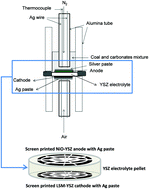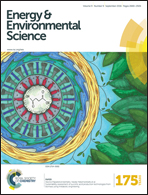Role of coal characteristics in the electrochemical behaviour of hybrid direct carbon fuel cells
Abstract
There is a growing interest in hybrid direct carbon fuel cells (HDCFCs) now considered as one of the most efficient options for the generation of clean energy from mineral coals. In this work, two different hard coals (bituminous and anthracite) have been modified via carbonisation and oxidation and their electrochemical behaviour has been compared in an electrolyte supported HDCFC. A new insight into the HDCFC reaction mechanism is presented, providing an exhaustive analysis taking into account not only the evolution of the properties of the coals upon treatment but also other relevant parameters such as the effect of the cell preparation step or the interaction of the coal with the other cell components. The results show that the carbon content, the carbonaceous structure and the reactivity of the coals are key characteristics for optimal electrochemical behaviour. The plasticity of bituminous coals, an important parameter overlooked in previous works, can help to extend the area for electrochemical reactions beyond the current collector/anode interface. The reaction mechanism proposed shows that additional gas phase electrochemical reactions are an important contribution during the early stages of the electrochemical testing and that the direct electrochemical oxidation of solid carbon is the dominant reaction at longer times.


 Please wait while we load your content...
Please wait while we load your content...